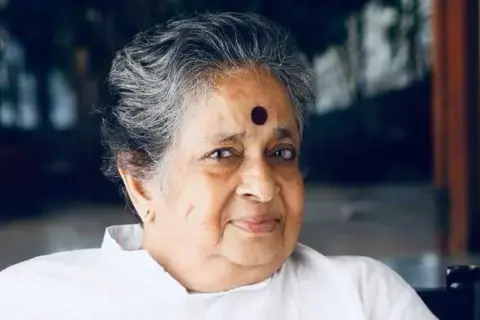Mother Mary Comes to Me by Arundhati Roy – A Review.
- Prisha Jain
- Nov 10
- 3 min read

Mother Mary Comes to Me by Arundhati Roy, simply put, is an account of the author’s relationship with her mother. What it also is, is an exercise in perspective. Fraught with tension, it is a retelling I devoured in a single sitting.
Its narrative is fairly chronological, from childhood to adolescence to adulthood. But what truly sets it apart from the saturated field of autobiographies and memoirs is Roy’s style. Often, it reads like a novel; sometimes, it reads like a political statement (or an explanation of Roy’s politics); mostly, though, it reads like a daughter who is trying to decipher her mother and by extension, herself. The book starts with the funeral of Roy’s mother, Mary. In a now popular quote, Roy describes her mother as a gangster and a storm that she weathered. She doesn’t beat around the bush about her mother’s abuse, be it physical, emotional or verbal. In fact, those instances are stated in quite a matter-of-fact way, as though it is a third person observing their interactions. Roy describes this as a process of ‘un-daughter[ing]’ herself to understand her mother. She exists in two forms: a woman and a daughter.
Perhaps, that is what has drawn many readers to Mother Mary Comes to Me – a daughter trying, and mostly failing, to figure her mother out but eventually doing the unthinkable: learning how to live with it. Roy can never manage to fully earn her mother’s approval nor can she stop herself from wanting it; she can never fully understand Mary as a mother but she frequently acknowledges her admiration for her as a woman. This untangling of the complicated web of emotions Roy associates with her mother is never fully accomplished.
However, that is exactly what I find so intriguing about the text. Mary is always observed from a distance: Roy as a child cannot offer insight into her mother’s behavior and Roy as an adult has internalized this complexity of their relationship. There is no psychoanalysis deployed to understand Mary as Arundhati Roy’s mother – and this is precisely how Roy avoids the pitfall of reducing a woman to her domestic status. Mary is an enigma, yes. But it is necessary for her to be just out of reach because her identity is layered, it cannot be honestly conveyed by her daughter. Mary Roy is a woman, a teacher, a woman of color, a single mother and many other things. These parts of her can never be grasped from another perspective; Arundhati Roy’s endeavor to un-daughter herself is an admirable attempt, but it is merely that: an attempt. Roy is aware of this. She does not offer insight into her mother’s mindset with authority. Instead, she speculates, she uses her experience to form hypotheses. There is no final answer as to who Mary Roy was – there are, however, multiple options.

I would like to clarify, though, that I don’t mean to discredit the book because it cannot pin down Mary Roy; I think the book is all the richer for it, primarily because it is not a text about Mary. It is a text about Mary Roy’s impact on Arundhati Roy. The ambiguity of the mother is a necessary tool to chart the author’s life, which she does with admirable reflexivity. When Roy runs away from home and puts herself through college, she doesn’t even bring up her mother for a significant chunk of the text. She talks about her own journey, her own experiences with learning new languages, romance and friends, her work as an actor and a writer (if you’re familiar with Indian TV channels, there are some Easter eggs in here). When she speaks of her inspiration for A God of Small Things, it is a turn back to her roots, to the house they were kicked out of. She notes that writing the novel would require a shift from the work she was doing with her then-husband; she doesn’t shy away from the impact her restlessness and ‘hunt for [her] own language’ (as she puts it) has on the people around her. She acknowledges her arrogance in an acceptance speech for the Booker Prize and comments that she regrets it. Her mother’s presence is an unsaid thing through it all: Roy’s outlook towards marriage, motherhood, and even her firmly held political stances.
All in all, Mother Mary Comes to Me is a text that clearly comes across as a piece of work that has been carefully curated (which may not be the best for autobiographies, but Roy’s not particularly keen on categorizing this book as any one thing) to channel the confusion, love, admiration, and sometimes, angst that muddle a mother-daughter relationship. It is a piece of emotional labor that I highly recommend reading, if not because of my take on it, then at least because of some very funny anecdotes.





Comments